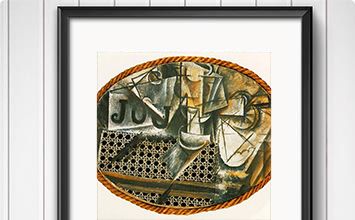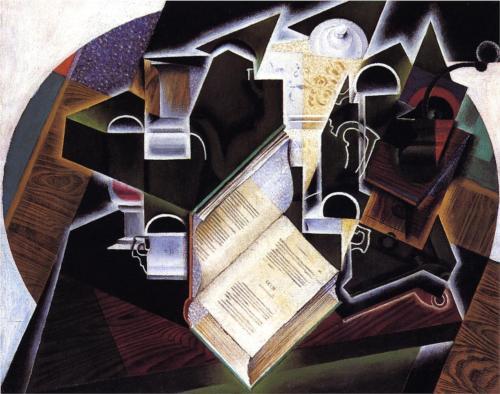
Labeled pointillism, Seurat’s technique had a decisive impact on how a painting is read. Georges Seurat created what was arguably the most stunning innovation in this respect by breaking down color into its optically constituent parts, using small dabs of pigment. Image Credit: Metropolitan Museum of Art, New York. While their work varied greatly in temperament and theme, they all pushed the boundaries of facture, as the handling of paint is called. The move toward Cubism began roughly around 1880 with the emergence of the Post-Impressionists, a group that included now-iconic names such as Seurat, Gaugin, Van Gogh, and Cézanne. Painting modern life, as the poet and critic Charles Baudelaire put it, supplanted the exaltations of church, state and classical mythology which comprised the core of Academic painting. Most significantly, history painting, which the Academie privileged above all other genres, was discarded in favor of formerly second- and third-ranked categories such as portraiture, landscape and still life, with the last assuming an especially prominent place in Cubism. Bit by bit, its shibboleths were discarded, steadily eroding the Academie’s institutional power. For 75 years or so, French painting had been moving away from the strictures of the Academie des Beaux-Arts, which had codified rules for painting and sculpture based on the Old Master model.


While Cubism may have fired the starting gun on 20th-century art, it also represented the endgame for issues that had consumed painters during the 19th century, particularly in its final decades. Image Credit: The Barnes Collection, Philadelphia.

Rather than rendering something from a particular vantage point in static terms, Cubism evoked the kinesthetics of seeing. Objects were depicted from different angles simultaneously, often in shifting patterns meant to suggest the movement of the eye over and around a subject. It collapsed figure and ground into planar configurations occupying the same compositional strata, eliminating the perception of depth. This was the case even for 19th-century Impressionism: A Monet haystack, for instance, still resembled a haystack.īut Cubism threw the baby out with the bathwater. Copyright © 2023 Artists Rights Society (ARS), New York / ADAGP, Paris.īeing able to make sense of what you were seeing was essential to the artistic template that came out of the Renaissance, and while subsequent developments (Mannerism, the Baroque, Rococo) tested its limits, none abandoned this core idea. Image Credit: Museum of Modern Art, New York. Taken together, these elements opened a metaphorical window through which a scene could be fixed in perpetuity, making painting the main instrument for visually recording existence until the invention of photography. The result was a tightly rendered surface that heightened the semblance of reality. Concomitantly, the widespread adoption of oil paint, along with glazes and varnishes, allowed light to penetrate through layers of color while keeping the evidence of brushwork to a minimum. Spanning what became known as the Old Master period, this resurrected form of painting was true to nature, combining geometrical perspective or its atmospheric variant (which evoked the sense of distance disappearing in a haze) and chiaroscuro (i.e., modeling with gradations of light) to give form and space the illusion of three-dimensionality.

Sculpture played a part, but Cubism was largely concerned with painting, and more specifically with undoing a paradigm that, as noted earlier, was based on a rediscovery of classical aesthetics that had been lost for a millennium after the fall of Rome. Copyright © 2020 Artists Rights Society (ARS), New York / ADAGP, Paris.Īs a style Cubism was relatively short-lived, cresting after about 10 years as its lessons were absorbed or supplanted. Image Credit: The Metropolitan Museum of Art, New York.


 0 kommentar(er)
0 kommentar(er)
